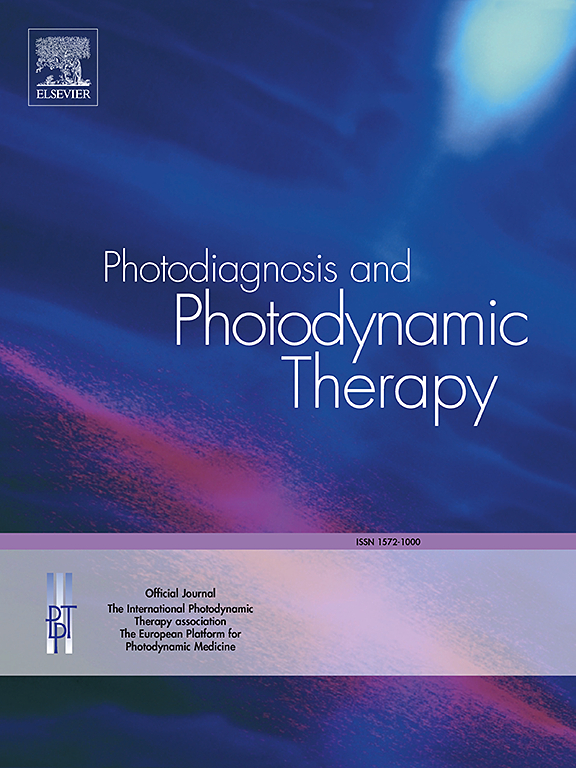应用光学相干断层血管造影研究首次冠状动脉狭窄患者视网膜和脉络膜血管的改变。
IF 3.1
3区 医学
Q2 ONCOLOGY
引用次数: 0
摘要
目的:通过光学相干断层扫描血管造影(OCTA)研究冠状动脉狭窄患者视网膜和脉络膜血管的变化。方法:本研究共纳入100名受试者,分为两组:观察组为50例首次诊断为冠状动脉狭窄的心绞痛患者,对照组为50例无心绞痛症状的健康成年人。所有受试者在首次诊断为冠状动脉狭窄时均行OCTA检查视网膜脉络膜血管密度的变化。参数包括浅表毛细血管丛密度(SCD)、深毛细血管丛密度(DCD)、视网膜乳头周围毛细血管丛密度(RPD)、脉络膜血管指数(CVI)和黄斑中央凹无血管区(FAZ面积、周长、循环指数、FD-300血管密度)。结果:冠状动脉狭窄组SCD、DCD均低于对照组(P=0.045、P=0.034), CVI低于对照组(P=0.029), FAZ周长、循环指数均高于对照组(P=0.003、P=0.024)。Logistic回归和ROC曲线分析显示,FAZ周长是预测冠状动脉狭窄最重要的危险因素(P=0.005, AUC=0.664), FAZ周长的临界值为2.065 mm。结论:首次诊断为冠状动脉狭窄的患者,视网膜和脉络膜血流量均减少。FAZ周长是预测冠状动脉狭窄发生的危险因素。本文章由计算机程序翻译,如有差异,请以英文原文为准。

Application of optical coherence tomography angiography to study retinal and choroidal vascular changes in patients with first-time coronary artery stenosis
Objective
To study the changes in retinal and choroidal vessels in patients with coronary artery stenosis via optical coherence tomography angiography (OCTA).
Methods
A total of 100 subjects were enrolled in this study and divided into two groups: the observation group consisted of 50 patients with angina who were first diagnosed with coronary artery stenosis, and the control group consisted of 50 healthy adults without angina symptoms. All of the subjects underwent OCTA to investigate changes in retinochoroidal vessel density in patients with a first diagnosis of coronary artery stenosis. The parameters included superficial capillary plexus density (SCD), deep capillary plexus density (DCD), retinal peripapillary capillary plexus density(RPD), the choroidal vascular index (CVI), and the macular foveal avascular zone(FAZ area, perimeter, acircularity index, FD-300 vessel density).
Results
SCD and DCD in the coronary artery stenosis group were lower than those in the control group (P = 0.045 and P = 0.034, respectively), the CVI was lower than that in the control group (P = 0.029), the FAZ perimeter and acircularity index were greater than those in the control group (P = 0.003,P = 0.024). Logistic regression and ROC curve analysis revealed that FAZ perimeter was the most significant risk factor for predicting coronary artery stenosis (P = 0.005, AUC = 0.664), and the cut-off value for FAZ perimeter was 2.065 mm.
Conclusions
In patients with a first diagnosis of coronary artery stenosis, both retinal and choroidal blood flow are reduced. FAZ perimeter is a risk factor for predicting the occurrence of coronary artery stenosis.
求助全文
通过发布文献求助,成功后即可免费获取论文全文。
去求助
来源期刊

Photodiagnosis and Photodynamic Therapy
ONCOLOGY-
CiteScore
5.80
自引率
24.20%
发文量
509
审稿时长
50 days
期刊介绍:
Photodiagnosis and Photodynamic Therapy is an international journal for the dissemination of scientific knowledge and clinical developments of Photodiagnosis and Photodynamic Therapy in all medical specialties. The journal publishes original articles, review articles, case presentations, "how-to-do-it" articles, Letters to the Editor, short communications and relevant images with short descriptions. All submitted material is subject to a strict peer-review process.
 求助内容:
求助内容: 应助结果提醒方式:
应助结果提醒方式:


